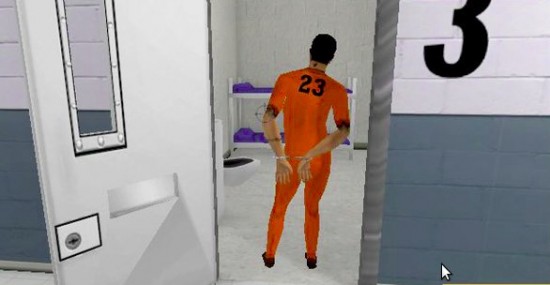Because we’re so passionate and committed to the arena of E-Learning in its many forms – virtual worlds development, 3D training scenarios, serious games, learning management systems and more – we wanted to revisit a subject we blogged about back in June of this year – The Gamification of Learning – otherwise known as serious games.
At a recent conference we attended – DevLearn Conference & Expo 2012 – many visitors to our booth were intrigued by the concept of serious gaming, as if this apparent contradiction in terms promised some magical experience outside of the realms of ordinary mortals. And while we do admit that the phrase is a little counter-intuitive at first, we think we can help our readers to come to a better understanding of what we’re talking about here, as well as what we’re designing in our offices and studio.
The word games conjures up images of group fun and competition, as well as playful activities to pass the time. Games also connotes the idea of escapism – of forgetting oneself and one’s daily duties and just enjoying time spent in idle pursuits. Adding the word serious to the mix completely mystifies some people, since games by their very nature and design are the exact opposite of serious – unless of course you’re talking about the Superbowl, which is another kind of ‘serious game’ altogether!
But if you put these two words together and think of them conceptually, the idea of serious games makes sense. Serious games are games that are played about serious, responsible, practical matters. Much like children first learn to count or to learn their ABCs through songs and gimmicks such as marbles or sticks, serious games arrive via the Internet and the digital world of computers to teach learners important procedures, processes and facts but in a playful, engaging manner. The main reasons these “games†are growing in popularity as training materials for companies and businesses of all types is two-fold.
First, the almost-universal presence of computers in all households, schools and libraries ensures that every generation since about 1980 has the experience of using keyboards and mice and monitors for playing and engaging with technology. For these students and workers, using a computer is as simple and intuitive as tying their shoes or ringing a doorbell. It’s a tool-set they are completely comfortable and at-home in using. Computer games, search engines, website navigation… these design applications are examples of form following function and are all simple and convenient for IT-based learners.
Secondly, now that technology has advanced beyond the printed word (Thank you Johannes Gutenberg!), our original learning mode practiced long before reading took hold of humanity can become a different modality for education. We’re of course talking about visual learning – something all humans use as their primary method of gathering information until they learn to read in about kindergarten or first grade. With the advent of highly sophisticated computer design programs for interactivity and graphics, visual learning can go to places undreamed of before the digital revolution.

And so serious games are born – playful interactive experiences using monitors or handheld devices that communicate medical procedures, security protocols, manufacturing processes and more with moving avatars and sound – all executed from the safety of one’s desk or armchair until enough learning has happened to make the physical tasks being practiced safe for the new learner to initiate. Serious games – they’re here and they’re remarkable tools for training and education. Allow Designing Digitally, Inc. to show you how serious games can make a positive impact on your employee training initiatives – contact us today to get started on gamification for your company business. Or read our testimonials first from clients just like you who’ve seen what the future holds for businesses today.
Want to learn more about serious games and simulations? You can download our 2012 White Paper – “Corporate Training Using 3D Serious Games and 3D Training Simulations.â€
(Article reprinted with permission from the Designing Digitally blog.)
- Understanding the oxymoron of serious games - February 6, 2013
- Virtual campus tours: 4 wrong turns - April 13, 2012
- Medical simulations can benefit healthcare, pharma industries - September 8, 2011
